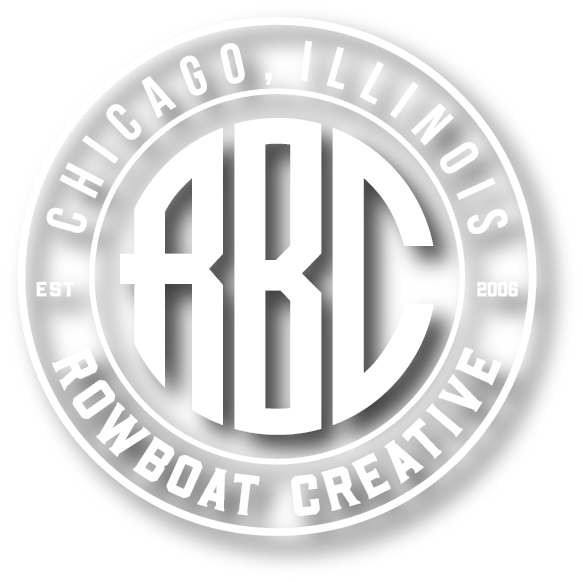Choosing the Right Screen Printing Process for Your Custom Merchandise
When it comes to printing custom merchandise, choosing the right ink & printing process can be overwhelming. Each screen printing process can represent your brand differently.
The ink & printing process you choose to print with should be customized to your brand’s merchandise production needs.
We wanted to make screen printing more approachable so we created a guide to help you understand which ink & printing process would be the best choice for your merchandise.
1. Plastisol Ink
This is the original printing ink that's most commonly used. It creates a heavier feel with an opaque imprint. Plastisol ink can be used on any type of garment & is the most universal ink.
Rowboat Creative recommends printing on darker garments with plastisol ink.
Plastisol is the printing industry standard and typically does not need to be mixed. If you want a custom pantone color, it will need to be mixed.
To ensure a vibrant & opaque print, an underbase should be applied to darker garments.
2. Water based Ink
Water based ink blends into the fabric of the garment leaving a soft feel. There is no change in the texture from the print to the garment. Water based ink can be printed on any type of garment.
Rowboat Creative recommends printing on 100% cotton or lighter garments with water based ink.
It is difficult to achieve pantone's colors with water based. Water based inks always need to be mixed.
To ensure a vibrant & opaque print, a discharge underbase should be applied to darker garments.
3. Discharge Ink
Discharge has the same results & feel as water based ink. However, discharge ink bleaches the fabric & changes the colors of the fabric fibers with your print. Discharge creates a more vibrant print with no feel. It can only be printed on 100% cotton.
Rowboat Creative recommends only printing on 100% cotton garments with discharge ink.
Discharge ink always needs to be mixed.
No underbase is needed for discharge ink printing.
4. Soft Hand Plastisol
Soft hand plastisol is a thinned down version of plastisol. It gives a softer feel then the classic plastisol ink. The soft hand ink is commonly known as the fashion ink because of the quality & results. It can be printed on any type of garment.
Rowboat Creative recommends printing on lighter garments with soft hand plastisol.
Soft hand plastisol ink always needs to be mixed.
No underbase is needed for soft hand plastisol ink printing.
5. Process Printing
Process Printing involves creating halftones on silkscreens and utilizing CMYK or spot colors to create a print with fewer silkscreens.
CMYK process printing is the traditional process printing technique that uses cyan, magenta, yellow, black inks to create a full color image. The printing process can be printed on any type of garments. CMYK inks are thin & can leave a soft feel.
Simulated process printing is an alternative to CMYK process printing that has no color restrictions like CMYK. Simulated process printing uses an endless supply of colors to create a print with less screens. Simulated process printing uses standard plastisol ink & can leave a soft feel.
Rowboat Creative recommends printing on any garments with process printing.
Process printing inks do not need to be mixed.
To ensure a vibrant & opaque print, an underbase should be applied to darker garments.
6. Specialty Inks
Specialty inks vary in imprint feel & pricing. The inks typically have a thicker texture resulting in a heavier touch. At Rowboat Creative we offer a variety of specialty ink processes including but not limited to:
3M
Puff
High-Density,
Glitter
Gold + Silver
Glow in the Dark
Rowboat Creative recommends printing on any garments with specialty inks.
Specialty inks do not need to be mixed.
To ensure a vibrant & opaque print, an underbase should be applied to darker garments.
6. Foils
A heat press & screen printing process. An ink adhesive is printed onto garments & foil is heat pressed onto the design resulting in a smooth feel.
Foils can be worn off/down and should be expected.
Rowboat Creative recommends printing on any garments with foils.
There is no mixing involved with foils.
No underbase is needed for foil printing.
Note additional fees that may apply:
Ink Mixing
2. Printing an Underbase
Written by Stephanie Cucinella








